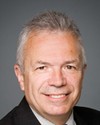Thank you, Mr. Chair.
Good morning, committee members.
I'd like to start by thanking you for the invitation to discuss Canadian Forces readiness from my perspective as Vice Chief of the Defence Staff, and to thank you for taking this on as an area of study and for spending so much time with so many of my colleagues. I'll try to answer any outstanding questions you may have as you begin to wrap up this phase of the study.
When you first began examining the issue of readiness last month, you heard from General Natynczyk, who described a few of our most notable operational successes over the last couple of years, such as our quick response to the January 2010 earthquake in Haiti or our rapid deployment to Libya this past spring, and how the Canadian Forces' high level of readiness was key to delivering the operational effect that was needed in these situations.
In the simplest of terms, General Natynczyk described readiness as “the ability to get the right people, with the right skills and the right equipment, into the right place at the right time...and to sustain that for as long as is required”.
Since then, you've heard from some of the many stakeholders across the defence team who helped contribute to those successes and whose efforts help generate and sustain the operational readiness of the Canadian Forces. Over the past few weeks, they have provided you with a great deal of information about the different ingredients of readiness and you have raised some excellent questions about the management, costs, and future of Canadian Forces readiness.
As the officer responsible for the realization of defence program objectives, I am in the best position to provide answers.
In particular, I know that some committee members have raised questions about government's current fiscal situation and how this could have a potential impact on our operational readiness. The short answer to that question, Mr. Chair, is that the readiness levels of the Canadian Forces, and what readiness looks like overall, will almost certainly change significantly over the coming years. However, I'd add that the government's fiscal policy will only be one of the many factors influencing this change. This is because the Canadian Forces as a whole will be transitioning to a new strategic reality over the same timeframe.
For nearly a decade now, the Canadian Forces have essentially operated in a war-time posture because of our sizeable commitments in Afghanistan. When it comes to resource management, all bets are off when a military goes to war. To deliver on our operational objectives and protect our deployed personnel, the government and the Canadian Forces accepted a significant increase in costs associated with equipment, personnel, and readiness. In addition to helping us succeed in Afghanistan, this short-term surge in operational focus helped achieve the broader readiness levels described to you by the Chief of Defence Staff, the readiness that allowed us to deploy so quickly to Haiti and to Libya and enabled us to modernize and coordinate such sizeable security efforts in support of the Vancouver Olympics and the G-8 and G-20 events in Ontario.
Of course, now that our combat mission has concluded and we are no longer sustaining a 3,000 person task force in Kandahar province, we must take steps to bring our resource requirements back into balance with broader priorities, both in terms of the economic priorities of Canadians as well as in support of our own longer-term capability requirements.
In this context, determining how much to invest in operational readiness is a complex undertaking. For any given potential operation there are a number of different questions related to readiness that need to be asked, such as how big will the operation be, how quickly will we need to deploy, how independent will we need to be, or what enablers can we rely upon other countries to provide, how long will we need to sustain our commitment, and how many other operations should we be prepared to undertake at the same time?
Each of these questions touches on a different aspect of readiness for our force, and for each one, the more ambitious we become, the more resources we must be prepared to invest, resources that then cannot be invested in other areas, such as developing new capabilities or upgrading our infrastructure. No matter how we respond to these kinds of questions, the answers must be achievable within our forecasted budget levels, and they must be sustainable in the long term.
Fortunately, we knew we would have to face these challenges well in advance of the close-out of our combat operations. We acted early on a number of fronts to rebalance the Canadian Forces in response to this transition. Like other federal departments and agencies, we have completed a strategic review and continue to work in support of the government's deficit reduction action plan, but we have also undertaken a number of internally initiated programs in an effort to identify and incorporate lessons learned from our recent operations, to strategically reorient the structures and practices of the defence team, and to prepare ourselves for the security challenges of the future.
This transformation effort is well under way, but it will take time to complete. In some cases the suggestions arising from these studies and initiatives are already being implemented, while in others they are still under review.
But while it is too soon to predict its exact outcome, we will continue to focus the end product on delivering the same three core roles outlined in the Canada First defence strategy: defending Canadians at home, contributing to the defence of North America, and projecting Canadian leadership abroad.
To achieve this vision we will continue to respect the same four pillars of personnel, equipment, infrastructure, and readiness, and we'll balance our resource investment across all four accordingly, because this is what generates effective, deployable capabilities. After all, even the finest soldier can't be deployed without thousands of hours of training, a base from which to operate, and all of the equipment, logistics, and medical support that he or she requires. And even the most advanced aircraft requires a capable pilot, either on the ground or in the aircraft, a reliable ground crew, a hangar, a runway, and adequate fuel and armaments to succeed in its mission.
Of course, adapting to this new post-Afghanistan context and achieving the right investment balance will require tough decisions. Building a new capability or even sustaining the current level of some capabilities will require trade-offs in others. After all, as the Chief of the Defence Staff said, readiness is expensive, so we'll have to be strategic and selective about where and how we devote our resources.
Unfortunately, this may require us to sacrifice some operational agility and flexibility in the short term so that we can generate capabilities we'll need in the longer term.
I cannot promise that over the next few years we will be able to sustain all of our six core missions simultaneously to the extent that we did in 2010. However, what I can promise is that the Canadian Forces will be ready to deliver the best operational output possible with the resources that we have. After all, Mr. Chair, we have a great integrated team at National Defence, with a common vision and an impressive track record, and by continuing the great work that is already under way, I believe we have every reason to be confident that in moving forward we will continue to deliver on the defence and security needs of Canadians and their government.
Thank you very much, and I look forward to your questions.




